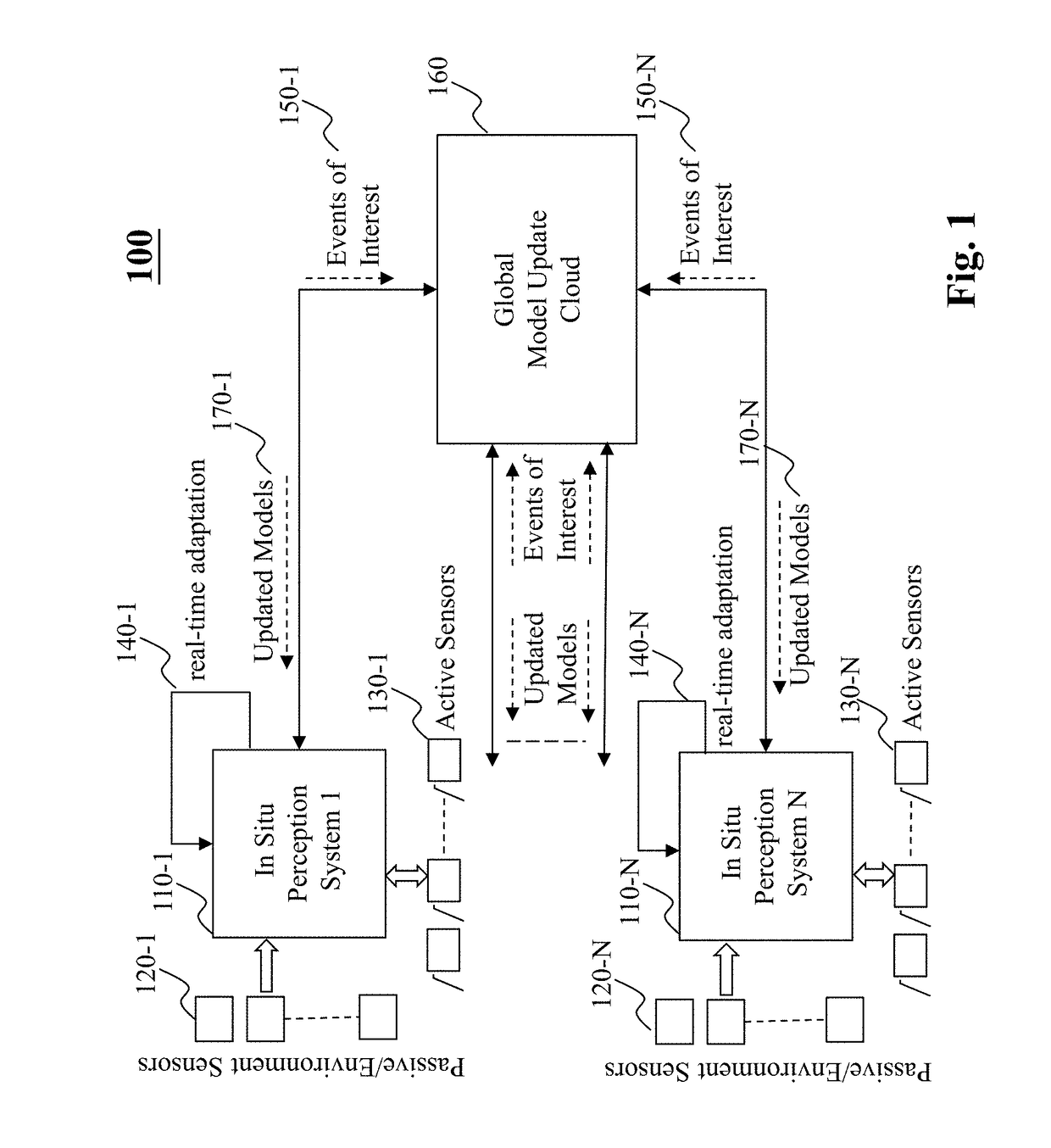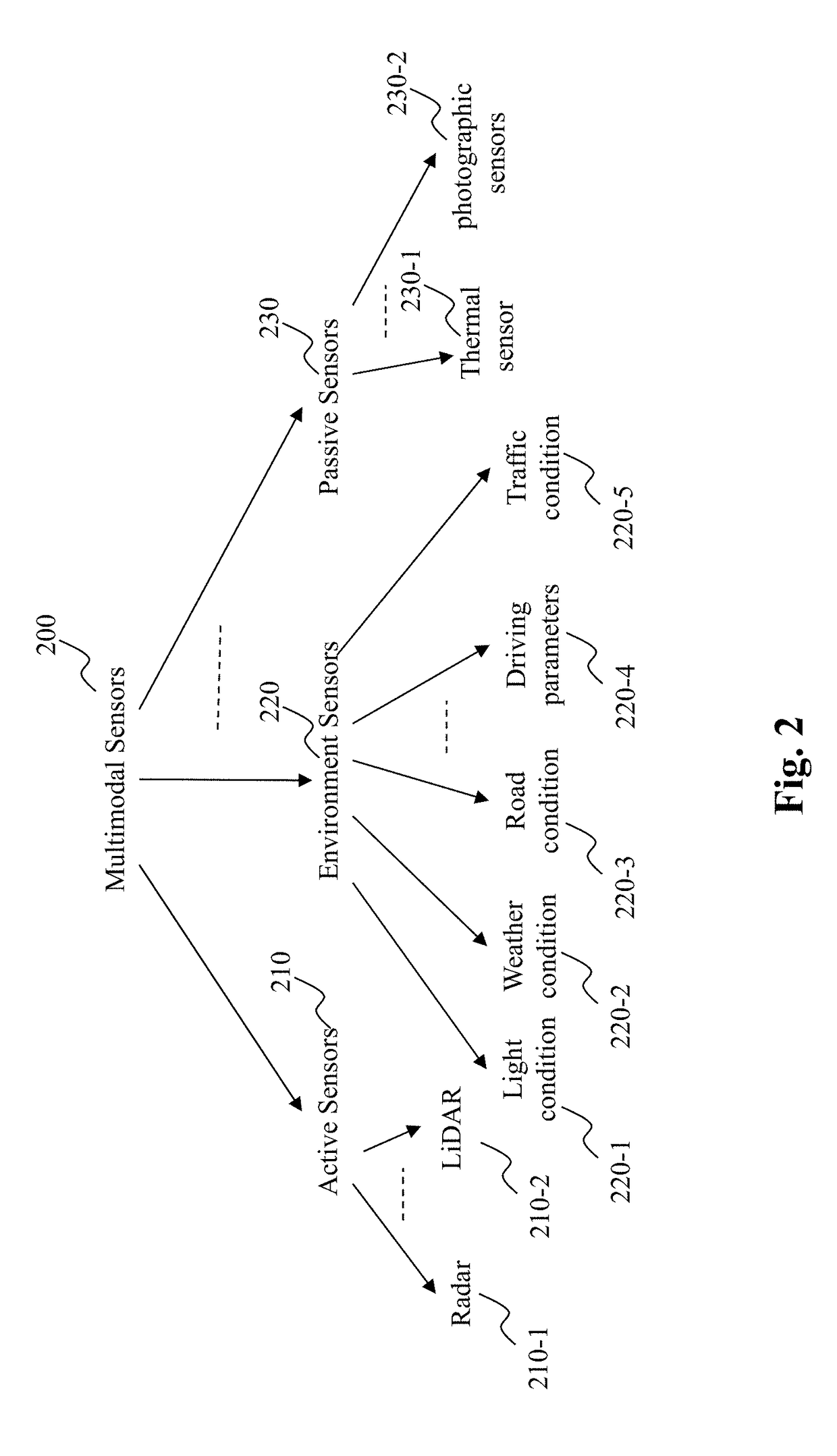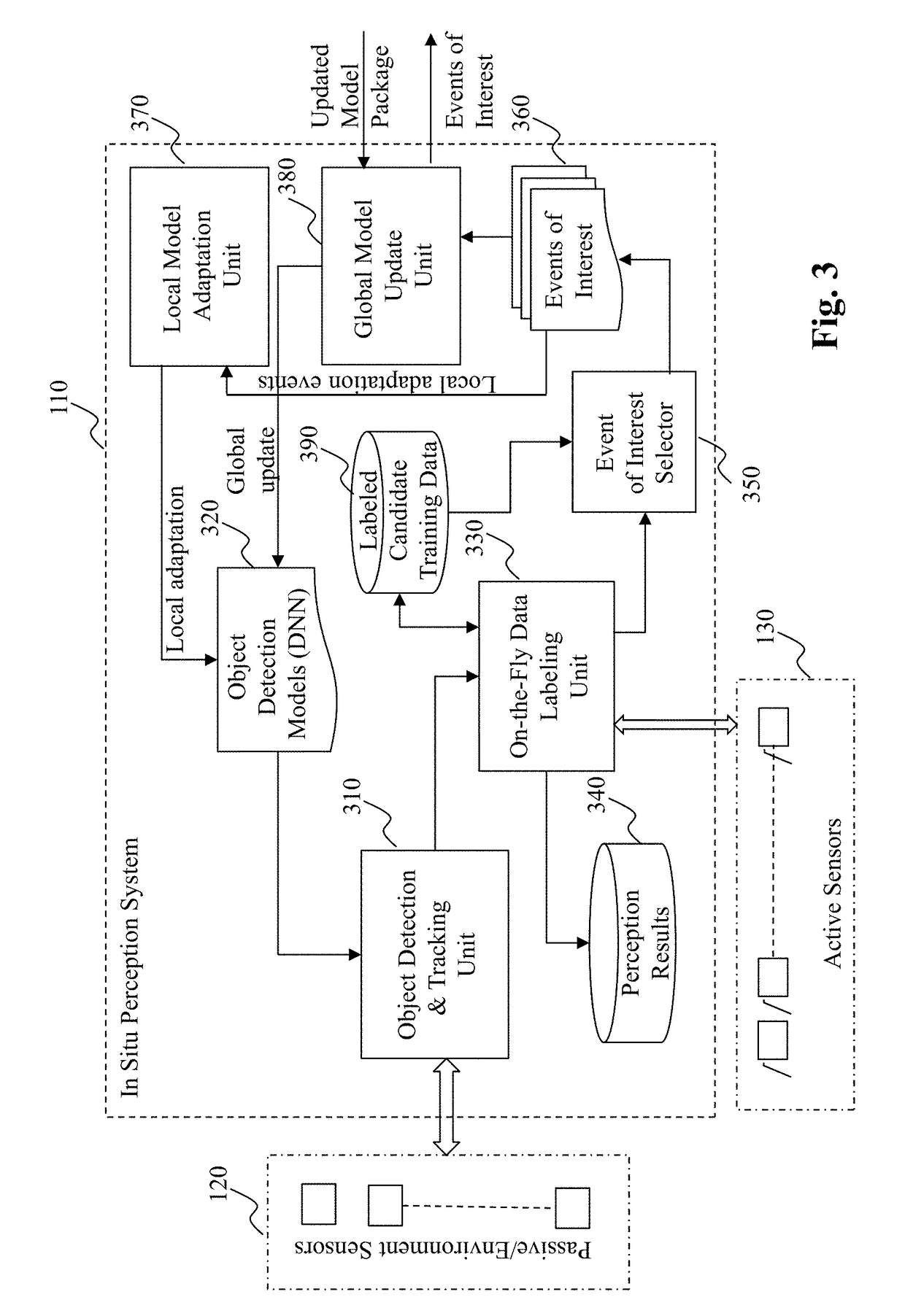Method and system for on-the-fly object labeling via cross modality validation in autonomous driving vehicles
a cross-modality validation and object labeling technology, applied in the field of automatic adaptive computer aided perception, can solve the problems of different sensors having different limitations, computationally expensive, and 2d images not providing depth measurements
- Summary
- Abstract
- Description
- Claims
- Application Information
AI Technical Summary
Benefits of technology
Problems solved by technology
Method used
Image
Examples
Embodiment Construction
[0049]In the following detailed description, numerous specific details are set forth by way of examples in order to provide a thorough understanding of the relevant teachings. However, it should be apparent to those skilled in the art that the present teachings may be practiced without such details. In other instances, well known methods, procedures, components, and / or circuitry have been described at a relatively high-level, without detail, in order to avoid unnecessarily obscuring aspects of the present teachings.
[0050]The present disclosure generally relates to systems, methods, medium, and other implementations directed to developing, training, and deploying effective computer aided perception system for autonomous driving vehicles. In different embodiments, the present teaching discloses an in situ computer aided perception system, method, and medium for on-the-fly model based object detection and cross validation in different dimensions to enable automatic on-the-fly training ...
PUM
 Login to View More
Login to View More Abstract
Description
Claims
Application Information
 Login to View More
Login to View More - R&D
- Intellectual Property
- Life Sciences
- Materials
- Tech Scout
- Unparalleled Data Quality
- Higher Quality Content
- 60% Fewer Hallucinations
Browse by: Latest US Patents, China's latest patents, Technical Efficacy Thesaurus, Application Domain, Technology Topic, Popular Technical Reports.
© 2025 PatSnap. All rights reserved.Legal|Privacy policy|Modern Slavery Act Transparency Statement|Sitemap|About US| Contact US: help@patsnap.com



